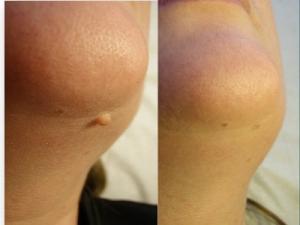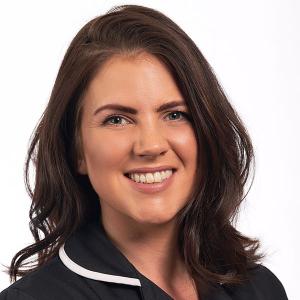Smooth, clear skin is something we all want and any moles, marks, or lumps can be unsightly and embarrassing, especially if they are on a visible area of your body. Moles can be seen as a beauty spot, barely noticeable, or as an unsightly lesion that you desperately want rid of. The skin is the largest and most noticeable organ of the body, which is why it is essential that your skin is healthy, and that you are happy. We understand that imperfections might not just be skin deep for you, and that mole reduction has the potential to significantly improve your confidence and wellbeing.
What is a mole?
A mole is either a coloured or un-pigmented growth on the skin that develops when melanocytes (pigment cells) grow in clusters. They are usually one colour, either black, brown, tan or skin coloured and occasionally red. They are typically round and appear flat or raised. Moles should not change as time goes on; however, they can develop hairs over years. Statistics show that on average an adult will have between 10-40 moles on their body and whilst most skin moles are easily ignored some may be unsightly making you feel self-conscious or may even cause you discomfort. Others may present characteristics that require a referral to your GP.
What are the different kinds of mole?
Regular or common mole
A regular, or 'common', mole is usually symmetrical with regular distinct edges, with even pigmentation and is approximately up to 5-6mm in diameter. They can be smooth or have a dome-like surface and may have hair growth. Regular moles are usually found on UV exposed areas.
Irregular mole
An irregular, or 'atypical', mole is usually asymmetrical with irregular or blurry edges, multiple colours and tend to be larger than regular moles. They are often flat or nearly flat and can be found anywhere on the body but are mainly located on UV exposed areas. While irregular moles themselves rarely turn into melanoma they have the potential to develop. It is very important to watch all moles for any change or atypical characteristics.
When checking moles always remember your ABCs and you experience any of the following, please consult your GP:
A - Asymmetrical
B - Irregular borders
C - Multiple colours
D - Diameter bigger than a standard pencil rubber
E - Evolving, changing, or new
How are moles reduced?
We begin with a thorough assessment of the mole(s), ensuring suitability before treatment which is to NHS standards. Your assessment includes characteristics such as symmetry, border, colour, diameter and evolution. If for any reason a mole is unsuitable, we follow a referral process to ensure your safety and wellbeing.
We use an advanced method of Electrolysis which administers short wave diathermy, essentially cauterizing the mole. We do not remove the mole completely; however, we do reduce and remove the visible appearance of the mole safely to achieve as close to a flat surface as possible to give the best cosmetic finish. Once the blemish has healed there is little to no evidence that the blemish was ever there. Larger fibrous moles may need a second treatment which would normally be carried out four weeks post-initial treatment.
Is there any down time?
After your treatment, the mole will appear as a flatter, 'crusty' version of itself and over a few days it will form a crust like scab. These scabs must not be picked and must be allowed to drop off themselves. We recommend Witch Hazel gel for the initial 48 hours, followed by Aloe Vera for the following 48 hours. You must also wear sunscreen daily.
How much does the treatment cost?
The typical cost per mole is £99, which will be discussed during your consultation with your practitioner. If you'd like to start your journey to smooth, blemish-free skin simply arrange a visit.
Stephanie
Author experience
Stephanie is STEREX trained in electrolysis and holds an Advanced Cosmetic Procedures and Level 4 Blemish Removal qualification. She has been performing electrolysis treatments for over 7 years.







